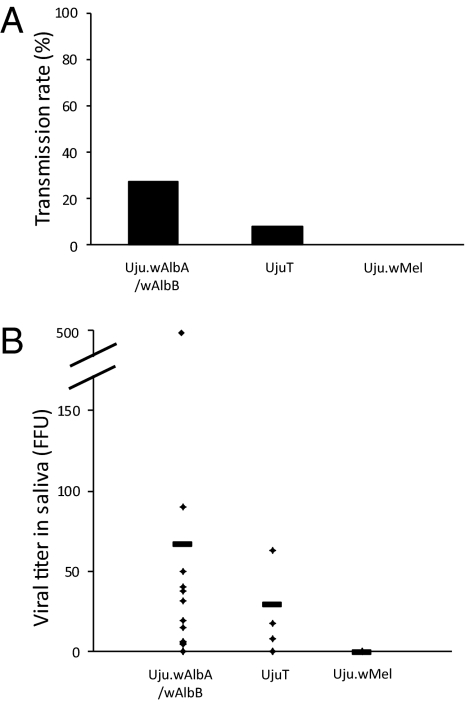Fig. 2.
Transmission capacity (A) and titer of dengue virus in mosquito saliva (B). Three Ae. albopictus strains (Uju.wAlbA/wAlbB, UjuT, and Uju.wMel) were orally infected with dengue 2 virus using glass feeders covered with a chicken skin membrane containing the infectious blood meal at a titer of 107 FFU/mL. After blood feeding, mosquitoes were transferred into cardboard containers and maintained in BSL3 insectaries at 28 °C. After 14 d, surviving mosquitoes were tested for the presence of viral particles in saliva collected using the forced salivation technique. The number of fluorescent foci in the saliva of each mosquito was estimated on C6/36 Aedes albopictus cell culture. The transmission capacity representing the percentage of mosquitoes with infectious saliva among tested mosquitoes was also calculated. The number of fed and assayed females was 44 for Uju.wAlbA/wAlbB, 26 for UjuT, and 44 for Uju.wMel.

